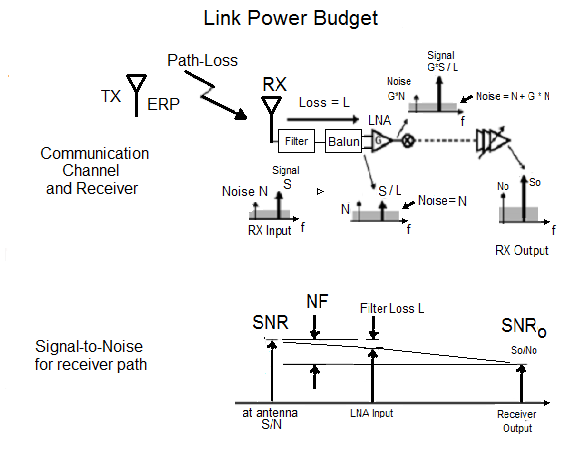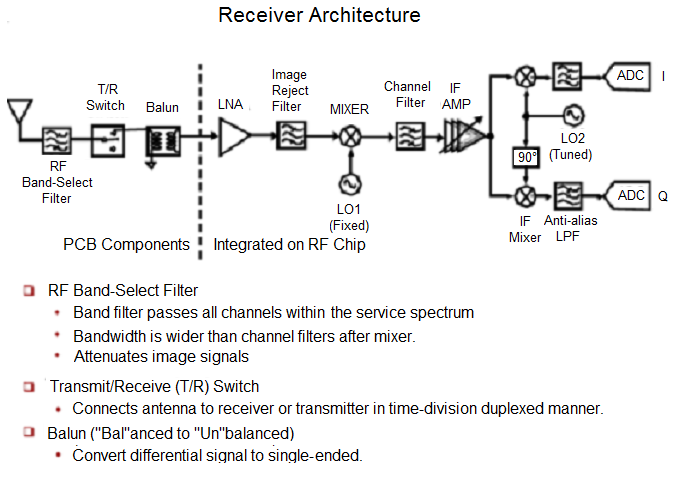The key concepts of formulating a power link budget include these factors:
- Friis Transmission Formula for signal loss over RF Channel Distance
- Power Spectrum Density
- Thermal Noise
- Signal-to-Noise Ratio
- Quantization Noise
- Bit Error Rate
- Shannon's Theorem for Channel Capacity
- Receiver Sensitivity

